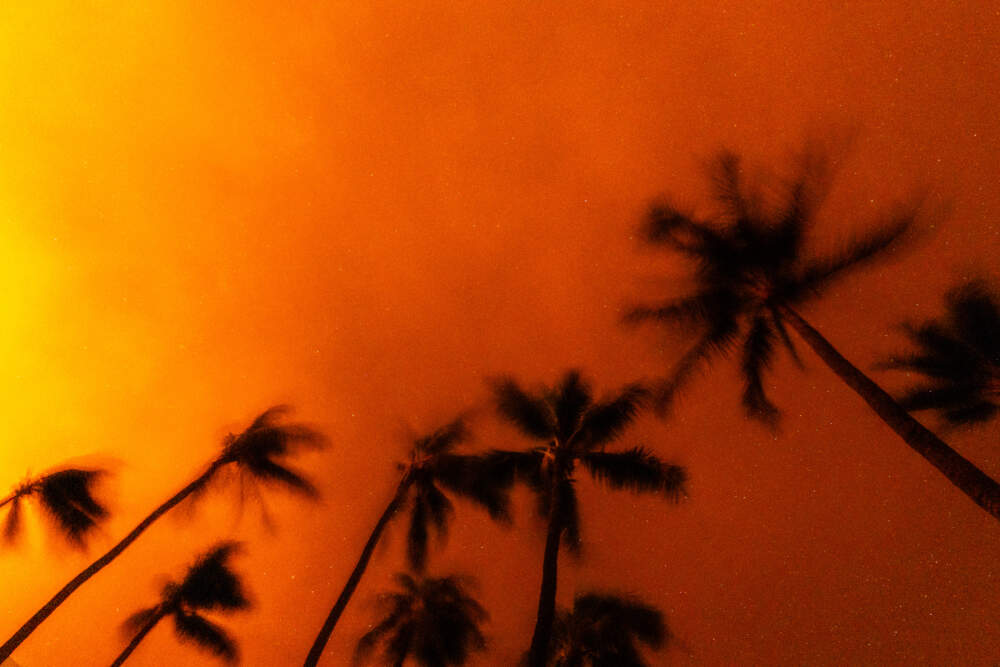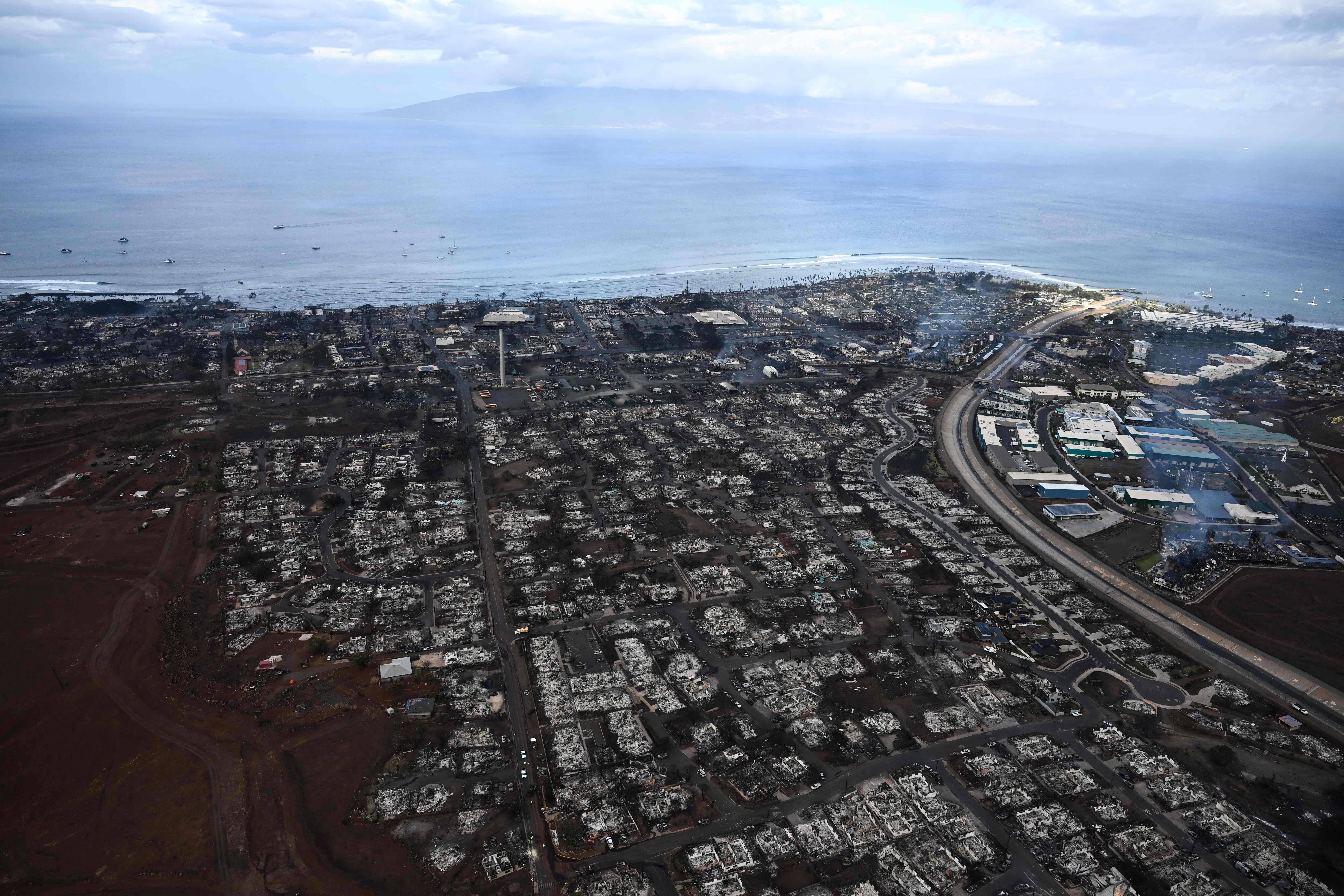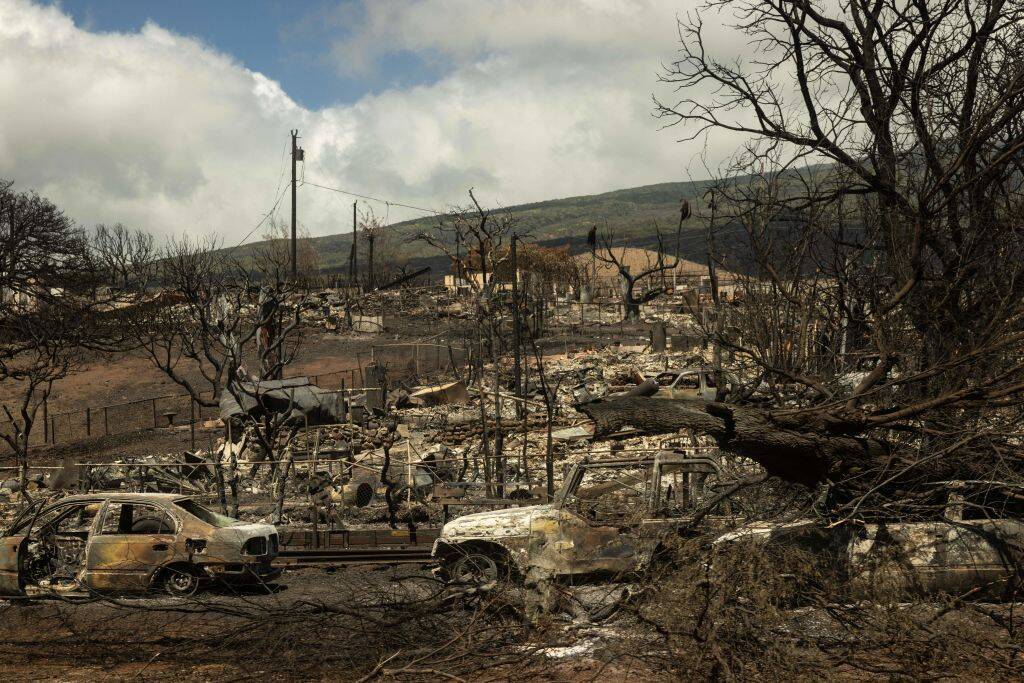Advertisement
Commentary
When we damage ecosystems like Maui’s, we give climate change more power to destroy

The tragedy on Maui belies the depiction of Hawaii as a sanctuary, a preserve of inviolate nature. In the smoking ruins of Lahaina, the erasure of indigenous history and the grievous toll of human lives defy clichés of lush jungled mountainsides, tumbling waterfalls and blissful honeymooners on black sand beaches.
Such postcard images have always idealized the islands, obscuring a history marred by exploitative plantations and extractive colonialism. Scientists studying the recent disaster cite Maui’s agricultural legacy as a contributing cause. The island was primed for a climate-induced catastrophe, in part due to myopic and ultimately degrading disruptions of its environment over the past 150 years.
There is no simple explanation for the ferocity of the blaze that incinerated Lahaina. The extent and severity of any wildfire depend on a complex interplay of many factors, direct and indirect. But in this case and many others, prior ecological damage caused by humans unquestionably set the stage for a dire outcome.
When we damage ecosystems, we give climate change more power to destroy.

An excellent example of this is the Mississippi River Delta, which is losing almost an acre of land per hour to the sea. Levees built to tame the river's floods also block its sediments, which once spread across the Delta and maintained the land mass. Today the sediment sinks uselessly into the depths of the Gulf of Mexico. With its supply of new soil cut off, the existing ground subsides and erodes away.
The oil and gas industry has also altered the Delta's landscape. Canals dredged for pipelines and shipping have uprooted vegetation and disturbed the natural flow of water. Salt water seeping deep into freshwater marshes through these artificial channels destabilizes the aquatic ecology and accelerates erosion.
These changes to the Delta's environment have diminished its natural defenses against climate threats. An intact delta would better absorb floodwaters and buffer rapidly intensifying hurricanes like Ida, which blasted the Louisiana coast in 2021. Moreover, stemming the accelerating loss of land would mitigate the consequences of inexorably rising sea levels this century.
Just 700 miles southeast of the Mississippi Delta, Florida’s coral reefs have similarly suffered damage, again creating conditions that intensify climate effects. Healthy reef structures protect against storm surges, erosion, and flooding. Coral reefs rely on freshwater flows from the mainland, which carry nutrients and other materials the corals need. The transfer of water maintains the corals’ habitat at the right salinity, temperature and chemistry for them to thrive.
[P]ostcard images have always idealized the islands, obscuring a history marred by exploitative plantations and extractive colonialism.
But today, runoff containing fertilizers and other chemicals washes into coastal waters from farms, cities and industry. This pollution overfeeds algae, which can bloom out of control and produce toxins that stress the sensitive corals, causing bleaching and weakening the reefs.
The ecosystem already had two strikes against it when a marine heat wave raised water temperatures to over 100°F last month. Ocean warming due to climate change is devastating the reefs, perhaps permanently in shallower areas. The evidence suggests that human activity has critically undermined the reef's capacity to adapt, enabling climate change to inflict maximum harm. This summer, teams of divers are urgently scrambling to salvage what they can of Florida’s iconic reefs.
On Maui, the story is repeated.
From the middle of the 19th century, Maui’s economy was based on sugar agriculture. The influx of European and American plantations brought with it grasses of African origin, like guinea grass, to feed livestock.
In the wet season, the nonnative grasses can grow explosively — upwards of six inches a day — producing tall, dense stands. But when the rains end, these grasses rapidly dry out and become fuel for wildfires. After fires burn through an area, the nonnative grasses regenerate quickly and spread, outcompeting indigenous plant species not adapted to regular wildfire disturbance. The cycle of rapid growth, desiccation, burning and regrowth causes a build-up of increasingly volatile fuel, making wildfires deadlier.

When sugar production shut down roughly a decade ago, the introduced grasses continued to proliferate wildly on formerly agricultural lands. During this time, drought and warming attributable to a changing climate created ideal conditions for wildfire.
At this writing, investigators suspect power lines may be the proximal cause of the Maui fires. But we can say with some confidence that what happened in Lahaina was partly due to climate change. Large portions of Maui were in an unusually severe drought, the result of a yearslong trend of increasing temperatures and decreasing rainfall. Hurricane Dora, the longest-lasting Category 4 hurricane on record in the Pacific, did not make landfall in Hawaii, but its powerful winds were instrumental in sustaining the conflagration.
However, in each of these cases, human activities that compromised environmental integrity — prior to the effects of climate change — substantially contributed to ruinous consequences.
Billions of dollars are now being spent on climate adaptation projects ranging from coastal fortifications to tree-planting initiatives to disaster preparedness. Beyond these efforts, proactively maintaining the health of the ecosystems that provide natural defenses against warming must be a priority.
To avoid future tragedies like the one unfolding in Lahaina, we need to stem ecological decline and begin to restore the planet’s inherent resilience. If we can do that, we may yet see our damaged Earth rise to meet the trials of climate change that await.
